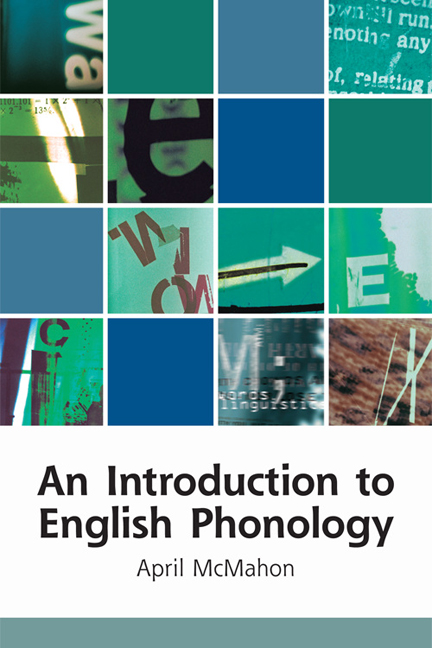Book contents
- Frontmatter
- Contents
- To colleagues
- 1 Sounds, spellings and symbols
- 2 The phoneme: the same but different
- 3 Describing English consonants
- 4 Defining distributions: consonant allophones
- 5 Criteria for contrast: the phoneme system
- 6 Describing vowels
- 7 Vowel phonemes
- 8 Variation between accents
- 9 Syllables
- 10 The word and above
- Discussion of the exercises
- References
- Index
- Frontmatter
- Contents
- To colleagues
- 1 Sounds, spellings and symbols
- 2 The phoneme: the same but different
- 3 Describing English consonants
- 4 Defining distributions: consonant allophones
- 5 Criteria for contrast: the phoneme system
- 6 Describing vowels
- 7 Vowel phonemes
- 8 Variation between accents
- 9 Syllables
- 10 The word and above
- Discussion of the exercises
- References
- Index
Summary
Phonology above the segment
At the end of the last chapter, we returned to the central issue, and the central task for phonologists, of assessing what speakers know about the structure of their language. In this book so far, we have concentrated on this knowledge, and the speech production that reflects it, at the level of the segment and below. That is, we have discussed vowels and consonants, the features of which they are composed and the judgements speakers make about them. However, as we shall see in this chapter and the next, speakers’ behaviour and intuitions also indicate the presence of phonological organisation at a series of higher levels, above the single segment. Vowels and consonants are not just strung together haphazardly into long, unstructured strands: instead, they form a series of larger units with their own internal structure and distribution, governed by their own rules.
The first and smallest of these superordinate units, the syllable, will be the main focus of this chapter. Recognising and understanding syllables helps us state some phonological processes (for example involving English /l/ and the aspiration of voiceless plosives) more accurately and succinctly. As we shall see in Chapter 10, the syllable and the next unit, the foot, are also crucial in analysing and determining the position of stress within each word. Finally, in whole utterances consisting of a sentence or more, phonological processes may apply between words, and rhythm and intonation produce the overall melody of longer stretches of speech.
The syllable
Speakers certainly have an intuitive notion of how many syllables each word contains: for instance, speakers of English would generally agree that meadow, dangerous and antidisestablishmentarianism (allegedly the longest word in the language) have two, three and twelve syllables respectively. It is less easy for speakers to reflect consciously on the internal structure of syllables, or to decide where one stops and the next starts; but a wide variety of cross-linguistic studies have helped phonologists construct a universal template for the syllable, within which particular languages select certain options. The internal structure of the syllable, and evidence for its subparts from a range of English phonological processes, will be the topic of this chapter.
- Type
- Chapter
- Information
- An Introduction to English Phonology , pp. 104 - 116Publisher: Edinburgh University PressPrint publication year: 2016



